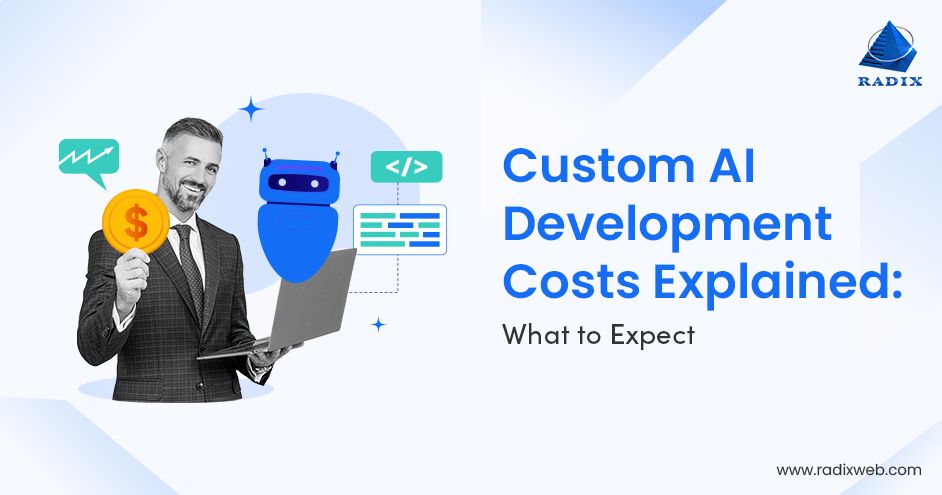
Skip Setup Headaches and Start Your Project Fast - Download Free Boilerplates
5 Things to Consider while Building Software for your Organization


Quick Summary: Did you know less than 30% of software projects were completed successfully? In today’s speed-first and dynamic digital age, building effective software for your firm requires strategic planning and execution. In this blog, we have uncovered five must-known factors to successfully develop software. Read on to make informed decisions and drive tangible value from your software projects.
Today it is difficult to imagine a successful business model without the integration of software. The software used could be customer-facing, or it could be used for internal processes. But the fact of the matter is that aligned, agile software is one of the top ways for a business to grow.
According to Statista's IT Market Model Survey, revenue of the global software market amounted to US$456 billion in 2018.
“Know your user”
One of the cardinal rules while developing technology is that the user has to be kept at the top of one’s mind. Even more so when the software is poised inwards, where the “users” are also the organization’s employees.
Software built for the organization, such as CRM, ERP, or custom LMS development aims to improve systems, solving problems, and augmenting the bottom line, hence ensuring that it meets everyone’s needs is imperative.
Using a well-built tech product can result in a considerable increase in revenue. Here are some of the most important benefits your business can hope to achieve through software development.
- New heights of integration. Software development makes your organization more integrated and accessible.
- A well-built software and simplify and improve sales and service. The way employees experience your business is as important as the way customers do so.
- Direct communication. Software development for your organization means direct communication between teams, individuals, and even customers.
Based on a research, for more than 1,167 large U.S. companies, there is a statistically significant correlation between the intensity of IT used in a company—IT capital per worker—and that company's overall productivity.
We at Radixweb understand the importance of every team member being a comfortable user when a software is built for the organization.
Build Software Solutions That Drive Real Results for Your Firm
Consult Our Experts
Top Things to Consider for Effective Software Development
1. What do you wish to Achieve?
When building software for your organization, you need to know exactly why the software is being built, i.e. you should have clearly outlined goals that shape a practical software solution. The following are a few questions that need to be answered before the development of the software goes underway.
- Has the business dedicated time and resources to detailing the purpose of the software? The better the developers understand the purpose and requirements of the software, the better the final product will be as more information translates into a better understanding of the businesses' expectations from the software.
- What are the business requirements? You will need to consider the core business needs and drivers, which will contribute to project length, scope, budget, and more.
- How will you implement your software? Allow your developer to work in tandem with your plans to integrate the software into business processes on time and on budget with the right level of involvement from your staff.
The question to be asked before building software for your organization isn’t -What features would you like to see implemented? It is- What problems are you experiencing with your current workflow?
2. Utilization of Agile Methodologies
The speed of business today is continuously accelerating. It is, therefore, essential to keep pace with the ever-evolving needs of in-house software.
Usage of agile methodologies and DevOps solutions such as Sprint demos, usage of a minimal viable product, retrospectives, and metrics to measure outcome assist not only in the adoption of the software by the workforce, but also the software’s overall success.

3. Feedback, Feedback and more Feedback
By gathering feedback, teams can avoid errors. Here are pointers on how to gather and utilize feedback-
- Surveys -Teams are given a chance to use newly developed tech to assist in the completion of their daily tasks. This provides the management with an opportunity to see if the product fills the need gap felt by the organization.
- After the trial period is over, an email survey can be sent to collect feedback. The anonymity of the users allows the feedback to be honest. Conversely, feedback can be incentivized so that it’s not just about quantity but also quality.
- Using tools like Spark and creating communities within it to document every facet of the software is also an efficient way of gathering real-time quantifiable feedback.
- Prototyping is effective, and arguably the best way to collect feedback. Conducts user research and tests directly with users before beginning to write code.
- Rapid prototyping of a software and offering the user is priceless. Prototyping saves a lot of money and also identifies where the software does well and where there is room for improvement.
4. Be Clear about The Intention, Not just The Feature
Sometimes an organization exists in the assumption that it knows what features or products could resolve the pain points in their business process. However, it may be missing critical data, leading the organization to a "false positive" assumption.
The question to be asked before building software for your organization isn’t "What features would you like to see implemented? It is, "What problems are you experiencing with your current workflow?"
Take Wells Fargo as an example – they manage around $1.9 trillion in assets and rely heavily on a custom CRM system tailored through precise software development services. This bespoke solution isn’t just about flashy features; it's designed to address specific challenges and streamline operations, ultimately saving hundreds of non-productive IT and business hours.
5. Is there a Return on Investment
The software that the company is investing in should have a measurable return. The following pointers help in measuring the ROI of the software product.
- What benefits does the organization expect of this software? What costs will it cut, or how much business will it bring in?
- What is the budget for the software? Are development costs and implementation costs included while considering technical as well as organizational change requirements.
- What is the timeline for measuring the returns the software is purported to bring in? Is it a short-term or a long-term measurement? Sometimes the benefits may not be immediately obvious, but long-term results can be substantial. Also, is the software a strategic requirement with in tangible returns?
- What is the deadline for this project? Is there a problem that needs to be addressed by a certain date, or is there a need to address a change in the market that happens at a specific date?

Read More : How to Do Time Estimations for Building Custom Software?
Now that we know what to take into consideration while building a software, the question arises whether to build it in-house or to delegate the task to a Software development outsourcing company. There are pros- and cons to each approach. Here we have enumerated the reason why Software development outsourcing is the way ahead.
- Access to a large talent pool and latest technology
- An increased focus on the core business, while IT operations are managed by the outsourcing partner.
- Cost-saving of upto 30% in operating costs
- Software development outsourcing ensures better risk management
- Software development outsourcing gives you better coverage against IT security breaches
- In software, you can reduce the time of deployment of your software as you can dictate timelines.
Wrapping up
Software development outsourcing is a great avenue to obtain digital transformation and growth through innovation while at the same time, reducing risks and increasing profit. Good custom software development firms assist businesses in obtaining competitive advantages without losing focus.
For the past 25 years, we at Radixweb have continually been Software development partners of over 2900 clients spread across 25 countries. We understand the finer nuances and intricacies of software development outsourcing. Book a call with our best in the business minds to discuss how Radixweb can help you grasp your Software goals.
Ready to brush up on something new? We've got more to read right this way.





